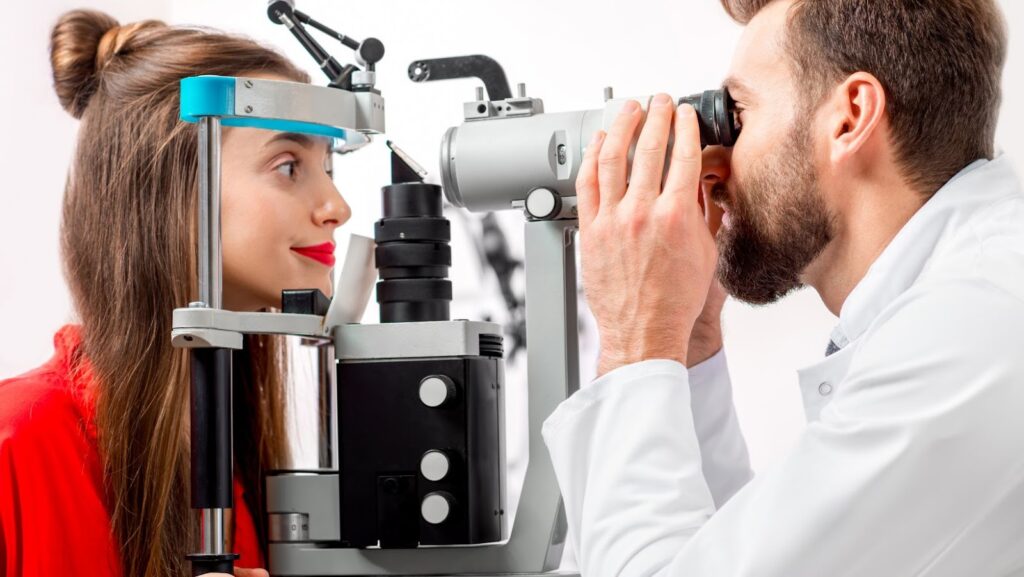Nanox has raised $20 million to scale its AI-based medical imaging system, bringing the total amount of funding to $58 million. The company is building a complete system featuring proprietary hardware, software, and an AI-driven backend. This system offers an advanced medical imaging platform that combines powerful AI and imaging technologies, improving medical imaging accuracy for medical professionals.
Let’s take a closer look at how Nanox’s AI medical imaging system works.
Overview of Nanox’s AI medical imaging system
Nanox’s AI medical imaging system is an innovative way to accelerate medical imaging processing, helping providers accurately and rapidly identify a wide variety of pathologies. This cutting-edge technology uses Artificial Intelligence (AI) algorithms to detect abnormalities in patient scans, allowing healthcare professionals such as radiologists to make more informed decisions when diagnosing and treating illnesses.
The system utilises deep learning models and a combination of various imaging modalities such as X-ray, computed tomography (CT), magnetic resonance imaging (MRI), ultrasound, and positron emission tomography (PET). All these require the processing and analysis of large amounts of data from multiple sources. Nanox’s AI medical imaging system processes all this data quickly and accurately by leveraging a powerful computer cluster with GPUs for faster analysis.
Once the model analysis has been completed, doctors are presented with a digital 3D visualisation of anatomy visualisations that include interactive functionalities for greater precision in diagnosis. This means better accuracy and faster processing times for both diagnosis and treatment. In addition, Nanox’s AI medical imaging system can be used across various specialised areas from cardiology to neurology, enabling specialists to diagnose issues quickly and efficiently while specialising more in their respective field.
Technology
Nanox has gained $20 millions to scale its AI medical imaging system and technologies. The startup uses X-ray and AI technologies to detect and diagnose medical conditions, improve patient outcomes, and reduce costs.
In this article, we’ll examine the technology behind this AI medical imaging system and how it works.
How Nanox’s AI medical imaging system works
Nanox’s AI medical imaging system uses cloud-based computer vision to interpret images taken during X-rays, CT scans, ultrasound scans and MRIs. The system includes an AI-powered cloud platform that provides intelligent readings of diagnostic images, taking the pressure off of overworked radiologists and clinicians.
The cloud platform stores raw, unprocessed images to be quickly accessed, then converts the data stored in the format into a two dimensional array. From there the AI model is applied to segment each type of scan into its respective parts – bones, tissue and blood vessels – which are then categorised by type. Next step involves extracting features from those parts so that unique information about each is contained in a collection of numbers known as a feature vector. Finally, this process is done for all parts to be identified.
The Neural Network then uses the feature vectors to classify each part within certain categories such as benign or malignant cells, fractures or enhancements etc., using all available structured and unstructured data related to them which has been learned during training. As a result, the AI medical imaging system can diagnose diseases more accurate than any human radiologist with lower turnaround times while handling applicable standards like HIPAA & GDPR securely. This type of medical imaging technology helps speed up diagnosis making cars faster and cheaper while decreasing the costs associated with misdiagnosis due to human errors.
Benefits of using AI in medical imaging
The primary benefit of using Artificial Intelligence (AI) in medical imaging is its ability to detect patterns and identify abnormalities much faster than a physician. It can quickly analyse medical images, such as X-rays, CT scans, mammograms and ultrasounds. With AI algorithms, medical professionals can diagnose diseases quicker and more accurately.
AI can also be a valuable tool in determining the most effective treatment options for any particular case. For example, AI technology can help detect early onset medical problems like tumours or other types of cancers that would otherwise go unidentified for long periods. This allows for earlier treatments which may increase the chances of recovery for patients. In addition, by accurately assessing risk factors such as age and lifestyle choices in real-time based on patient data collected from wearables or other sources, AI can provide better recommendations for preventive health checkups or personalised care plans that aid physicians in providing better patient guidance.

Nanox’s AI assisted medical imaging system is designed to support existing imaging technologies and practitioners with artificial intelligence to improve accuracy and reduce examination time for technicians and radiologists. Additionally, Nanox’s system can handle large volumes of diagnostic images efficiently while providing valuable insights that enable physicians to make data-driven decisions quickly with confidence across all major fields such as ophthalmology, dermatology, orthopaedics and cardiology.
Nanox raises $20 million to scale its AI medical imaging system
Nanox, a tech company specialising in artificial intelligence (AI) medical imaging, recently raised $20 million to scale its AI medical imaging system. The investment came from companies such as Marubun Corporation, Sumitomo Corporation, Sompo Japan Nipponkoa, and the Israel Innovation Authority. This infusion of capital will help Nanox develop its cash-strapped technology and expand its ability to detect diseases earlier and more accurately than traditional methods.
Let’s take a look at how the system works.
Details of Nanox’s $20 million investment
Nanox, an Israeli company specialising in medical imaging technologies, recently announced a $20 million investment round with strategic and venture partners. The funding was led by Wilshire Western Investment and participated by notable healthcare industry investors such as Elsewhere Partners, Anagh Fund USA LLC, Philips Research US Investments BV and media investment firm Vivendale Group.
The funding proceeds will be allocated to help Nanox complete its clinical validation process and progress towards deployments of its revolutionary nano-x ray imaging system. The investment marks a significant step ahead in the launch of Nanox’s AI-driven medical scanning solution. This technology allows healthcare professionals to diagnose illnesses using x-ray techniques which are much smaller than traditional CT scanners. Furthermore, this approach uses big data AI analytics to offer automated diagnosis – a much faster service than traditional methods.
This major milestone demonstrates Nanox’s commitment to providing innovative solutions for the medical world through its sophisticated AI Medical Imaging system – an exciting prospect for healthcare professionals in various countries around the globe. In addition, Nanox is expected to benefit from the strategic partnerships formed as part of this major investment round as well v enterprise customers such as SHARP HealthCare in California (USA), which is taking part in the first deployment process for early access partners and is already preparing for deployment locations around its facilities in summer 2021.
How the investment will be used to scale the AI medical imaging system
With Nanox’s AI medical imaging system, clinicians can quickly get a clear and accurate 3D picture of a patient’s anatomy, aiding in more accurate diagnosis and treatment. Currently, this technology is in the process of being developed and tested to become commercially available. Investment will help Nanox scale the AI medical imaging system to make this revolutionary technology available worldwide.

Using the investment from venture capital and other sources, Nanox plans to:
- Hire additional engineers to improve on their current prototype
- Increase production capability for the volume needed for commercial demand
- Accelerate marketing plans for making their product widely accessible
- Create partnerships with institutions who can help further expand global distribution
Through this investment, Nanox plans for their AI medical imaging system to become widely accessible within the next few years. This will allow hospitals, clinics and research centres worldwide access to state-of-the-art technology capable of intense imaging with unprecedented accuracy at a fraction of normal costs associated with traditional medical equipment.
Impact
Nanox’s AI medical imaging system has been making waves in the medical world, recently raising $20 million to scale their tech. The system leverages AI, cloud computing, and hardware advancements to offer a more comprehensive and cost-effective system with many potential applications. As the technology progresses, the impact of Nanox’s AI medical imaging system on the healthcare industry is becoming more evident.
In this article, we’ll explore the potential impact of Nanox’s AI medical imaging system.
Potential impact of AI in medical imaging
The potential impact of artificial intelligence (AI) in medical imaging is huge. By automating and enhancing the process of analysing medical images, AI could help to improve the accuracy and speed of diagnosis and monitor patient outcomes with great accuracy. AI also helps to eliminate or reduce the risk of human error, while freeing up time for radiologists to focus on more important tasks.
AI-driven image-processing technology, such as Nanox’s AI medical imaging system, can assist doctors in interpreting complex medical scans quickly and accurately. The technology can be used to analyse CT, X-ray, MRI, PET/CT scan data and applied across any specialty or anatomical area. As a result, it allows doctors to obtain rapid accurate diagnoses or decision support nearly instantly.
Nanox AI also provides predictive analytics through deep learning algorithms that allow hospitals and clinics worldwide access to advanced artificial intelligence capabilities that were previously unavailable. This can help them make more personalised and accurate diagnoses backed by extensive data collected from previous exams which could pave the way for earlier detection of diseases and better treatment outcomes for patients.
AI tools could revolutionise the practice of radiology by making it more precise, cost-effective and reliable – even enabling second opinions from remote locations when needed – as well as immediate results for physicians and patients due to decreased diagnosis times. With its rich data repository built on thousands of studies Nanox is helping healthcare facilities progress towards greater efficiency and reliability within their practices.
Implications of Nanox’s AI medical imaging system on the healthcare industry
Nanox’s AI medical imaging system has the potential to revolutionise the healthcare industry and create a new era of cost-effective and efficient healthcare. This system has been designed to rapidly process large volumes of medical imagery data with the help of Artificial Intelligence (AI) to power real-time diagnostics for physicians, reducing patient wait times, costs, and all the other main issues with traditional imaging scanners.

The core implications of this advanced AI imaging system are:
-Improved detection speed: Nanox’s AI is specifically developed to process massive amounts of complex data in an incredibly short time, resulting in faster diagnosis than traditional scanners.
-Enhanced accuracy: AI enhances accuracy by leveraging its large array of powerful algorithms for supervised learning, working across many data points with greater repeatability and consistency than ever before.
-Efficient workforce management: Automation applied through Nanox’s system simplifies patient workflow processes and can significantly reduce labour costs associated with performing manual image analysis tasks.
-Cost savings: Reducing conventional initial start-up costs such as expensive equipment can substantially drive overall costs and make healthcare more accessible by reducing barriers such as cost to patients. More accessible healthcare could also reduce health disparities between populations with different access rights due to their socioeconomic backgrounds or location.
-Better patient experience: The enhanced workflow efficiency takes some burden off clinicians’ shoulders so they have more time for direct patient care services which can further lead up better patient outcomes in terms conversation related topics like conversations about lifestyle changes (dietary modification, exercising habits) etc., which an automated system cannot do directly. However, it provides information that may set the foundation for such conversations (). Moreover, this automated system is less invasive than traditional methods though it still requires a clinical procedure like x rays/CT scans for data collection into the system.
tags = Nanox, $20 million, AI medical imaging system, X-ray with hardware, nanox medical vision 200mwiggersventurebeat, Star Trek‘s biobed, World Health Organization,, korean subsidiary, SK Telecom


More Stories
Cracking the Code: Writing SEO-Friendly Content Without Raising Google’s Spam Alarms
The Evolution of Faxing: Embracing the Future
The Evolution of Conversational AI: Transforming Customer Experiences